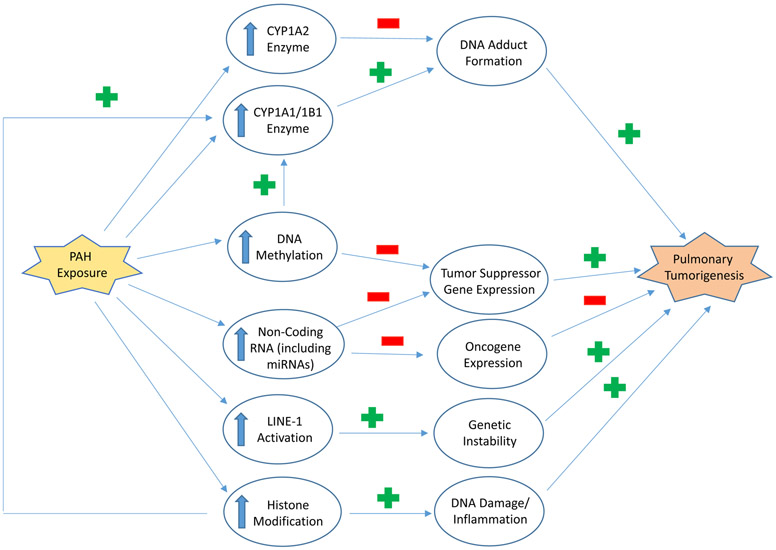Figure 9.
PAH may contribute to pulmonary carcinogenesis through a multitude of mechanisms. One mechanism is through the upregulation of CYP1A1/CYP1B1 enzymes, which form DNA adducts on key gene sequences, such as p53. These mutations result in lung tumor formation. CYP1A2 is also upregulated by PAH exposure but has a protective mechanism against carcinogenesis. PAH exposure also induces epigenetic changes of DNA methylation and non-coding RNAs, including microRNA (miRNA). These epigenetic mechanisms downregulate tumor suppressor gene expression, thereby promoting pulmonary tumorigenesis. Non-coding enzymes can also inhibit oncogene expression, which serves as a protective mechanism and prevents tumor formation. Long interspersed nuclear element (LINE) activation is also induced by PAH exposure. Due to activation, LINE-1 insertions cause genetic instability and tumor development. PAHs have has been linked to histone modification, which induces proteins that promote DNA damage and inflammation. Histone modification also occurs during upregulation of CYP1A1 transcription caused by the PAH-AHR complex and further contribute to pulmonary carcinogenesis via DNA adduct formation.

